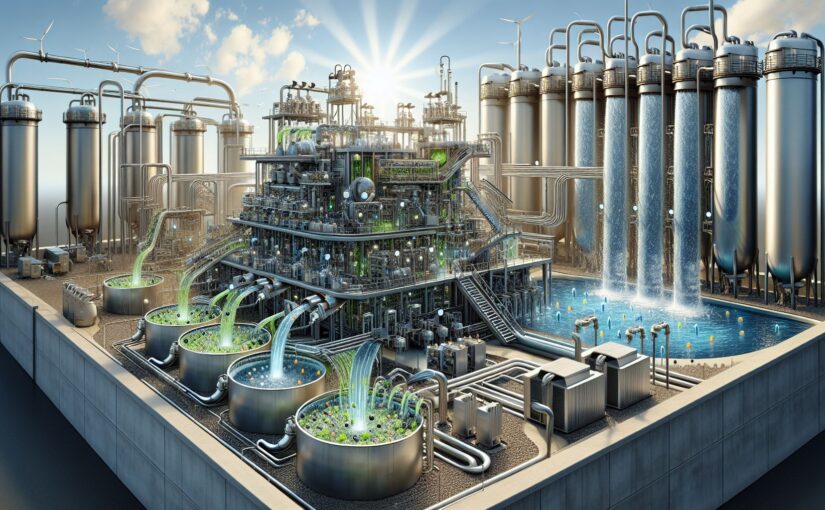In the modern age where electricity demand is constantly on the rise, unconventional methods of energy generation are gaining more attention. One of these emerging methods is the production of bioelectricity from wastewater. This innovative technology holds immense potential for sustainable energy generation and effective wastewater management.
Wastewater, generally disposed of as waste, possesses elements that can be transformed into a power source. With the right approach and technology, this ‘waste’ can become a significant contributor to the energy future of the world.
How Does It Work?
In the bioelectricity generation process, specific microbes known as “exoelectrogens” play a crucial role. These organisms oxidize the organic material in wastewater and release electrons. Using a device called a microbial fuel cell (MFC), these electrons can be captured and used to generate electricity.
The MFC is comprised of two compartments – the anode and the cathode. The exoelectrogens in the wastewater release electrons to the anode. These electrons are then transported to the cathode. In the final process, these electrons combine with protons and oxygen in the cathode to produce water, thereby completing the circuit and generating a flow of electricity.
Environmental Impact and Benefits
Aside from generating electricity, this process is immensely beneficial to the environment. Wastewater treatment generally requires a substantial amount of energy. By producing bioelectricity, not only does this process reduce the cost of wastewater treatment, but it also combats the issue of water pollution by processing wastewater more effectively.
Moreover, the generation of bioelectricity from wastewater reduces the dependence on fossil fuels for energy production, significantly mitigating the release of greenhouse gases and contributing to the fight against climate change.
Challenges and Future Scope
Though promising, this technology is still in its nascent stages and faces a few challenges. Improving the efficiency of microbial fuel cells and making it feasible on a large, industrial scale are key areas that researchers are currently focussing on. Despite these challenges, the potential benefits of this technology undoubtedly make it a field worth exploring.
As we look towards the future, the generation of bioelectricity from wastewater has the potential to become a key player in the global energy landscape. By transforming what we have long seen as ‘waste’ into a resource, we can define a new path in our journey towards renewable energy and environmental sustainability.
Sources
-
Logan, Bruce E. et al. “Microbial Fuel Cells: Methodology and Technology.” Environmental Science & Technology, American Chemical Society (ACS), 17 Jul 2006, link
-
Gajda, Iwona et al. “The challenges of scaling up microbial fuel cell technology for real world wastewater treatment applications.” Environmental Science: Water Research & Technology, Royal Society of Chemistry (RSC), 29 Sep 2019, link
-
Rozendal, René A. et al. “Towards practical implementation of bioelectrochemical wastewater treatment.” Trends in Biotechnology, 11 Jul 2008, link
